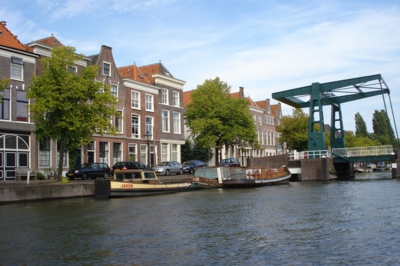Marblecore Imaging Library Documentation
Search in documentation
Documentation Introduction
- Getting started
- Methods
- AdjustBrightness
- AdjustColorBalance
- AdjustColorLevel
- AdjustContrast
- AdjustGamma
- AdjustHue
- AdjustHueSaturation
- AdjustLightness
- AdjustRGB
- AdjustSaturation
- AutoColorEnhance
- AutoColorLevel
- AutoContrast
- CaptchaCreate
- CaptchaPhrase
- Channel
- Clear
- ColorOverlay
- ColorTone
- Create
- Crop
- Desaturate
- Deserialize
- Dither
- DrawArc
- DrawArrow
- DrawBackground
- DrawBezier
- DrawCheckerboard
- DrawCurve
- DrawCurveBorder
- DrawCurveFilled
- DrawCurveGradient
- DrawEllipse
- DrawEllipseBorder
- DrawEllipseFilled
- DrawEllipseGradient
- DrawFloodFill
- DrawLine
- DrawPie
- DrawPieBorder
- DrawPieFilled
- DrawPieGradient
- DrawPixel
- DrawPolygon
- DrawPolygonBorder
- DrawPolygonFilled
- DrawPolygonGradient
- DrawRectangle
- DrawRectangleBorder
- DrawRectangleFilled
- DrawRectangleGradient
- DrawRectangleTransparent
- DrawRhombus
- DrawRhombusBorder
- DrawRhombusFilled
- DrawRhombusGradient
- DrawRoundRectangle
- DrawRoundRectangleBorder
- DrawRoundRectangleFilled
- DrawRoundRectangleGradient
- DrawTextInGradient
- DrawTextInGradientUsingWarp
- DrawTextInGradientWithBorder
- DrawTextInGradientWithBorderAndShadow
- DrawTextInGradientWithBorderAndShadowUsingWarp
- DrawTextInGradientWithBorderUsingWarp
- DrawTextInGradientWithShadow
- DrawTextInGradientWithShadowUsingWarp
- DrawTextNormal
- DrawTextUsingWarp
- DrawTextWithBorder
- DrawTextWithBorderUsingWarp
- DrawTextWithShadow
- DrawTextWithShadowUsingWarp
- DrawTriangle
- DrawTriangleBorder
- DrawTriangleFilled
- DrawTriangleGradient
- EffectBorder
- EffectButton
- EffectColorOverlay
- EffectInnerBevel
- EffectInnerGlow
- EffectMask
- EffectOuterGlow
- EffectShadow
- EffectSoftenBorder
- Expand
- FileConvert
- FileCrop
- FileExpand
- FileFlipHorizontal
- FileFlipVertical
- FileResize
- FileRotate
- FileRotateLeft
- FileRotateRight
- FileShrink
- FileThumbnail
- FilterBlinds
- FilterBlurAverage
- FilterBlurGaussian
- FilterBlurRadial
- FilterBlurSmooth
- FilterBlurZoom
- FilterCheckerboard
- FilterCustom
- FilterCustomFromFile
- FilterCustomFromURL
- FilterCylinder
- FilterDespeckle
- FilterEdgeDetect
- FilterEmboss
- FilterFractalTrace
- FilterHalftone
- FilterIllusion
- FilterLens
- FilterLensFlare
- FilterMeanRemoval
- FilterMedian
- FilterNoise
- FilterOffset
- FilterOilPaint
- FilterPinch
- FilterPixelate
- FilterPosterize
- FilterRipple
- FilterSharpen
- FilterSharpenEdges
- FilterSharpenMore
- FilterShift
- FilterSoftGlow
- FilterSolarize
- FilterSplash
- FilterStripe
- FilterTextureFromBase64
- FilterTextureFromFile
- FilterTextureFromSerializedStream
- FilterTextureFromStream
- FilterTextureFromURL
- FilterThreshold
- FilterTileReflect
- FilterUnsharpMask
- FilterVideo
- FilterWave
- FilterWhirl
- FilterWhirlPinch
- FlipHorizontal
- FlipVertical
- GetBase64String
- GetBitsPerPixelFromFile
- GetColorFromCMYK
- GetColorFromHTML
- GetColorFromRGB
- GetExif
- GetExifCameraMakerFromFile
- GetExifCameraModelFromFile
- GetExifCompressedBitsPerPixelFromFile
- GetExifCompressionFromFile
- GetExifCopyrightFromFile
- GetExifDateTakenFromFile
- GetExifExposureBiasFromFile
- GetExifExposureTimeFromFile
- GetExifFlashEnergyFromFile
- GetExifFlashModeFromFile
- GetExifFocalLengthFromFile
- GetExifFromFile
- GetExifFromInfo
- GetExifFStopFromFile
- GetExifHorizontalResolutionFromFile
- GetExifISOSpeedFromFile
- GetExifLightSourceFromFile
- GetExifMaxApertureFromFile
- GetExifMeteringModeFromFile
- GetExifOrientationFromFile
- GetExifProgramModeFromFile
- GetExifResolutionUnitFromFile
- GetExifSubjectDistanceFromFile
- GetExifVersionFromFile
- GetExifVerticalResolutionFromFile
- GetFileExtensionFromFile
- GetFileExtensionFromFormat
- GetFileFolderFromFile
- GetFileFromFormat
- GetFileNameFromFile
- GetFileWithoutFolderFromFile
- GetFormatAsStringFromFile
- GetFormatFromFile
- GetFormatFromString
- GetFramesFromFile
- GetGUID
- GetHasMultipleFramesFromFile
- GetHeightFromFile
- GetHistogramAverage
- GetHistogramCount
- GetHistogramMean
- GetHistogramPercentile
- GetHistogramPixels
- GetInfoFromFile
- GetInfoFromURL
- GetIsAnimatedFromFile
- GetIsCMYKFromFile
- GetIsSupportedFromFile
- GetMegaPixelsFromFile
- GetMIMEFromFile
- GetMIMEFromFormat
- GetPixelColor
- GetTextHeight
- GetTextWidth
- GetWidthFromFile
- Grayscale
- InsertFromBase64
- InsertFromFile
- InsertFromSerializedStream
- InsertFromStream
- InsertFromURL
- InsertHistogram
- Invert
- LicenseVerify
- LineTo
- LoadFont
- LoadFromBase64
- LoadFromFile
- LoadFromSerializedStream
- LoadFromStream
- LoadFromURL
- LoadHistogramFromBase64
- LoadHistogramFromFile
- LoadHistogramFromSerializedStream
- LoadHistogramFromStream
- LoadHistogramFromURL
- LosslessCrop
- LosslessFlipHorizontal
- LosslessFlipVertical
- LosslessRotate
- LosslessRotateLeft
- LosslessRotateRight
- Mask
- MaskOverlayFromBase64
- MaskOverlayFromFile
- MaskOverlayFromSerializedStream
- MaskOverlayFromStream
- MaskOverlayFromURL
- MoveTo
- Opacity
- RedEyeCorrection
- ReleaseFont
- Reset
- ResetFont
- Resize
- Rotate
- RotateLeft
- RotateRight
- RoundEdges
- SaveHistogramToFile
- SaveHistogramToImage
- SaveHistogramToSerializedStream
- SaveHistogramToStream
- SaveToBase64
- SaveToFile
- SaveToHBitmap
- SaveToHBitmapPreMultiplied
- SaveToStream
- Sepia
- Serialize
- SetBackgroundColor
- SetFont
- SetFormat
- SetFormatDefault
- SetPen
- SetPixel
- SetTransparency
- Shear
- Shrink
- Skew
- Straighten
- Thumbnail
- Tint
- Properties
- BackgroundColor
- BackgroundOpacity
- BitsPerPixel
- BitsPerPixelFromInfo
- ColorCount
- CursorX
- CursorY
- ExifCameraMaker
- ExifCameraMakerFromInfo
- ExifCameraModel
- ExifCameraModelFromInfo
- ExifCompressedBitsPerPixel
- ExifCompressedBitsPerPixelFromInfo
- ExifCompression
- ExifCompressionFromInfo
- ExifCopyright
- ExifCopyrightFromInfo
- ExifDateTaken
- ExifDateTakenFromInfo
- ExifExposureBias
- ExifExposureBiasFromInfo
- ExifExposureTime
- ExifExposureTimeFromInfo
- ExifFlashEnergy
- ExifFlashEnergyFromInfo
- ExifFlashMode
- ExifFlashModeFromInfo
- ExifFocalLength
- ExifFocalLengthFromInfo
- ExifFStop
- ExifFStopFromInfo
- ExifHorizontalResolution
- ExifHorizontalResolutionFromInfo
- ExifISOSpeed
- ExifISOSpeedFromInfo
- ExifLightSource
- ExifLightSourceFromInfo
- ExifMaxAperture
- ExifMaxApertureFromInfo
- ExifMeteringMode
- ExifMeteringModeFromInfo
- ExifOrientation
- ExifOrientationFromInfo
- ExifProgramMode
- ExifProgramModeFromInfo
- ExifResolutionUnit
- ExifResolutionUnitFromInfo
- ExifSubjectDistance
- ExifSubjectDistanceFromInfo
- ExifVersion
- ExifVersionFromInfo
- ExifVerticalResolution
- ExifVerticalResolutionFromInfo
- FileExtension
- FileExtensionFromInfo
- FileFolder
- FileFolderFromInfo
- FileName
- FileNameFromInfo
- FilePath
- FilePathForWeb
- FilePathFromInfo
- FileWithoutFolder
- FileWithoutFolderForWeb
- FileWithoutFolderFromInfo
- FontAlignment
- FontAntiAliasing
- FontBold
- FontColor
- FontFace
- FontItalic
- FontOpacity
- FontRotation
- FontSize
- FontStrikeout
- FontUnderline
- Format
- FormatAsString
- FormatAsStringFromInfo
- FormatDefault
- FormatFromInfo
- FormatOriginal
- FormatOriginalAsString
- Frame
- Frames
- FramesFromInfo
- HasMultipleFrames
- HasMultipleFramesFromInfo
- Height
- HeightFromInfo
- IsAnimated
- IsAnimatedFromInfo
- IsCMYK
- IsCMYKFromInfo
- IsConverted
- IsJPEG
- IsLoaded
- IsSupported
- IsSupportedFromInfo
- IsSupportedOriginal
- IsTransparent
- JPEGProgressive
- JPEGQuality
- LicenseCode
- LicenseDateCreated
- LicenseDateExpired
- LicenseDateRenewed
- LicenseExpired
- LicenseName
- LicenseProduct
- LicenseProductKey
- LicenseProductVersion
- LicensePublisher
- LicenseReference
- LicenseValid
- MegaPixels
- MegaPixelsFromInfo
- MIME
- MIMEFromInfo
- PenAntiAliasing
- PenCap
- PenColor
- PenOpacity
- PenStyle
- PenWidth
- PixelCount
- Transparency
- WebFilter
- Width
- WidthFromInfo
- Enumerations
- Categories
- Basic operations
- Captcha
- Color adjustments
- Color conversion
- Color transformations
- Drawing
- DrawArc
- DrawArrow
- DrawBackground
- DrawBezier
- DrawCheckerboard
- DrawCurve
- DrawCurveBorder
- DrawCurveFilled
- DrawCurveGradient
- DrawEllipse
- DrawEllipseBorder
- DrawEllipseFilled
- DrawEllipseGradient
- DrawFloodFill
- DrawLine
- DrawPie
- DrawPieBorder
- DrawPieFilled
- DrawPieGradient
- DrawPixel
- DrawPolygon
- DrawPolygonBorder
- DrawPolygonFilled
- DrawPolygonGradient
- DrawRectangle
- DrawRectangleBorder
- DrawRectangleFilled
- DrawRectangleGradient
- DrawRectangleTransparent
- DrawRhombus
- DrawRhombusBorder
- DrawRhombusFilled
- DrawRhombusGradient
- DrawRoundRectangle
- DrawRoundRectangleBorder
- DrawRoundRectangleFilled
- DrawRoundRectangleGradient
- DrawTriangle
- DrawTriangleBorder
- DrawTriangleFilled
- DrawTriangleGradient
- GetPixelColor
- LineTo
- MoveTo
- Effects
- EXIF properties
- GetExif
- GetExifCameraMakerFromFile
- GetExifCameraModelFromFile
- GetExifCompressedBitsPerPixelFromFile
- GetExifCompressionFromFile
- GetExifCopyrightFromFile
- GetExifDateTakenFromFile
- GetExifExposureBiasFromFile
- GetExifExposureTimeFromFile
- GetExifFlashEnergyFromFile
- GetExifFlashModeFromFile
- GetExifFocalLengthFromFile
- GetExifFromFile
- GetExifFromInfo
- GetExifFStopFromFile
- GetExifHorizontalResolutionFromFile
- GetExifISOSpeedFromFile
- GetExifLightSourceFromFile
- GetExifMaxApertureFromFile
- GetExifMeteringModeFromFile
- GetExifOrientationFromFile
- GetExifProgramModeFromFile
- GetExifResolutionUnitFromFile
- GetExifSubjectDistanceFromFile
- GetExifVersionFromFile
- GetExifVerticalResolutionFromFile
- ExifCameraMaker
- ExifCameraMakerFromInfo
- ExifCameraModel
- ExifCameraModelFromInfo
- ExifCompressedBitsPerPixel
- ExifCompressedBitsPerPixelFromInfo
- ExifCompression
- ExifCompressionFromInfo
- ExifCopyright
- ExifCopyrightFromInfo
- ExifDateTaken
- ExifDateTakenFromInfo
- ExifExposureBias
- ExifExposureBiasFromInfo
- ExifExposureTime
- ExifExposureTimeFromInfo
- ExifFlashEnergy
- ExifFlashEnergyFromInfo
- ExifFlashMode
- ExifFlashModeFromInfo
- ExifFocalLength
- ExifFocalLengthFromInfo
- ExifFStop
- ExifFStopFromInfo
- ExifHorizontalResolution
- ExifHorizontalResolutionFromInfo
- ExifISOSpeed
- ExifISOSpeedFromInfo
- ExifLightSource
- ExifLightSourceFromInfo
- ExifMaxAperture
- ExifMaxApertureFromInfo
- ExifMeteringMode
- ExifMeteringModeFromInfo
- ExifOrientation
- ExifOrientationFromInfo
- ExifProgramMode
- ExifProgramModeFromInfo
- ExifResolutionUnit
- ExifResolutionUnitFromInfo
- ExifSubjectDistance
- ExifSubjectDistanceFromInfo
- ExifVersion
- ExifVersionFromInfo
- ExifVerticalResolution
- ExifVerticalResolutionFromInfo
- File operations
- File properties
- GetFileExtensionFromFile
- GetFileExtensionFromFormat
- GetFileFolderFromFile
- GetFileFromFormat
- GetFileNameFromFile
- GetFileWithoutFolderFromFile
- FileExtension
- FileExtensionFromInfo
- FileFolder
- FileFolderFromInfo
- FileName
- FileNameFromInfo
- FilePath
- FilePathForWeb
- FilePathFromInfo
- FileWithoutFolder
- FileWithoutFolderForWeb
- FileWithoutFolderFromInfo
- Filters
- Artistic
- Blur
- Color
- Distortion
- Light
- Noise
- Other
- Sharpen
- Textures
- Video
- Fonts
- Histogram
- GetHistogramAverage
- GetHistogramCount
- GetHistogramMean
- GetHistogramPercentile
- GetHistogramPixels
- InsertHistogram
- LoadHistogramFromBase64
- LoadHistogramFromFile
- LoadHistogramFromSerializedStream
- LoadHistogramFromStream
- LoadHistogramFromURL
- SaveHistogramToFile
- SaveHistogramToImage
- SaveHistogramToSerializedStream
- SaveHistogramToStream
- Insert
- Licensing
- Lossless transformations
- Masking
- Pen
- Properties
- GetBase64String
- GetBitsPerPixelFromFile
- GetFormatAsStringFromFile
- GetFormatFromFile
- GetFormatFromString
- GetFramesFromFile
- GetGUID
- GetHasMultipleFramesFromFile
- GetHeightFromFile
- GetInfoFromFile
- GetInfoFromURL
- GetIsAnimatedFromFile
- GetIsCMYKFromFile
- GetIsSupportedFromFile
- GetMegaPixelsFromFile
- GetMIMEFromFile
- GetMIMEFromFormat
- GetWidthFromFile
- SetBackgroundColor
- SetFormat
- SetFormatDefault
- SetPixel
- SetTransparency
- BackgroundColor
- BackgroundOpacity
- BitsPerPixel
- BitsPerPixelFromInfo
- ColorCount
- CursorX
- CursorY
- Format
- FormatAsString
- FormatAsStringFromInfo
- FormatDefault
- FormatFromInfo
- FormatOriginal
- FormatOriginalAsString
- Frame
- Frames
- FramesFromInfo
- HasMultipleFrames
- HasMultipleFramesFromInfo
- Height
- HeightFromInfo
- IsAnimated
- IsAnimatedFromInfo
- IsCMYK
- IsCMYKFromInfo
- IsConverted
- IsJPEG
- IsLoaded
- IsSupported
- IsSupportedFromInfo
- IsSupportedOriginal
- IsTransparent
- JPEGProgressive
- JPEGQuality
- MegaPixels
- MegaPixelsFromInfo
- MIME
- MIMEFromInfo
- PixelCount
- Transparency
- WebFilter
- Width
- WidthFromInfo
- Text drawing
- DrawTextInGradient
- DrawTextInGradientUsingWarp
- DrawTextInGradientWithBorder
- DrawTextInGradientWithBorderAndShadow
- DrawTextInGradientWithBorderAndShadowUsingWarp
- DrawTextInGradientWithBorderUsingWarp
- DrawTextInGradientWithShadow
- DrawTextInGradientWithShadowUsingWarp
- DrawTextNormal
- DrawTextUsingWarp
- DrawTextWithBorder
- DrawTextWithBorderUsingWarp
- DrawTextWithShadow
- DrawTextWithShadowUsingWarp
- GetTextHeight
- GetTextWidth
- Transformations
- Examples
- Support
- Download
- Buy license
- Test drive license
ColorOverlay method
Applies a color overlay on the image.
Syntax
Boolean ColorOverlay(nColor As Number, nOpacity As Number, nLeft As Number, nTop As Number, nWidth As Number, nHeight As Number)
Return value
Returns true if the function succeeded.Parameters
| Parameter | Type | Required | Description |
| nColor | Number | Yes | Specifies the overlay color. |
| nOpacity | Number | No | Optional parameter which specifies the opacity of the overlay color. |
| nLeft | Number | No | Optional parameter which can be used to specify a clipping rectangle. This parameter specifies the left coordinate of the rectangle. |
| nTop | Number | No | Optional parameter which can be used to specify a clipping rectangle. This parameter specifies the top coordinate of the rectangle. |
| nWidth | Number | No | Optional parameter which can be used to specify a clipping rectangle. This parameter specifies the width of the rectangle. |
| nHeight | Number | No | Optional parameter which can be used to specify a clipping rectangle. This parameter specifies the height of the rectangle. |
Example
The example below shows the effect of this method and how to use it. You can slide the marker in the before/after picture to see the difference. If you take a look at the example code, assume there is a reference to the Marblecore Imaging object with the name 'MarblecoreImaging'. Transparent parts of the image are displayed using a checkerboard pattern.

1 // Load the specified image in memory
2 MarblecoreImaging.LoadFromFile("example-coloroverlay-before.jpg");
3
4 // Execute the operation
5 MarblecoreImaging.ColorOverlay(65280, 25);
6
7 // Save the modified image to the specified file
8 MarblecoreImaging.SaveToFile("example-coloroverlay-after.jpg");